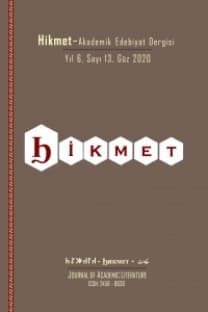DÜNÜN ACILAR ŞEHRİ, BUGÜNÜN SERVİLER, GÜLLER VE IHLAMURLAR KENTİ: ESKİ ZAĞRA
Asırlar boyunca birçok adla anılmakla birlikte Osmanlıların Zağra-i Eskihisar, Eskihisar-ı Zağra, Zağra Eskisi ve Zağra veya Zağra-i Atik gibi adlar verdikleri Eski Zağra, Bulgaristan’ın orta kesimlerinde yer alan eski ve önemli bir şehirdir. Yörede “Ihlamurlar ve Güller Şehri” olarak adlandırılan Eski Zağra’nın fethi Lala Şahin Paşa tarafından 14. yüzyılda gerçekleştirilir. Türkler ele geçirdikleri bu şehri imar ederek onu “güller vadisi” adı verilen bu bölgede bir sanat şehri haline getirirler. Burada tarih boyunca pek çok şair, yazar ve devlet adamı yetişir. 16. yüzyılın sonundan itibaren Eski Zağra’da Müslüman olmayan nüfusun artmasıyla şehrin demografik yapısı her geçen gün değişir ve bu değişim 19. yüzyılda Türk nüfusunun büyük oranda azalmasıyla daha çok hissedilir. Savaşlar sebebiyle bu toprakları terk etmeye zorlanan Türklerin Eski Zağra’ya hüzünlü vedası hafızlarda hâlâ diridir. Eski Zağra, günümüzde sahip olduğu termal kaplıcaları ve şehirdeki 35 civarındaki turistik oteliyle sağlık turizmi açısından da hayli iddialı bir şehirdir. Şehrin insana ferahlık veren iki yanı ağaçlı geniş bulvarları, alışveriş merkezleri, müzeleri görülmeğe değer. Diğer taraftan 370 binlere ulaşan il nüfusuyla önemli bir endüstri şehri olan Eski Zağra’da, doğal olarak çeşitli sanayi dalları gelişmiş ve eskiden olduğu gibi bugün de şehir yine pamuklu dokuma sanayii, kimyasal madde üretimi, gübre imalâtı, tarım araçları ve makine parçaları sanayii, sigara, bira ve konserve üretimi ile Bulgaristan ekonomisine çok önemli katkılar sağlamayı sürdürmektedir.
YESTERDAY’S CITY OF PAIN, TODAY'S CITY OF CYPRESS TREES, ROSES AND LAKES: OLD ZAGRA
Old Zagra, which is also called by the Ottomans as Zağra-i Eskihisar, Eskihisar-ı Zağra, Zağra Eskisi and Zağra or Zağra-i Atik, is an old and important city located in the central part of Bulgaria. The conquest of the Old Zağra, which is called the "City of Linden and Roses" in the region, was carried out by Lala Şahin Pasha in the 14th century. The Turks reconstructed this city after capturing it and turn it into an art city in this region called the "valley of roses". Many poets, writers and statesmen have been raised here throughout history. Since the end of the 16th century, the demographic structure of the city has changed with the increase of non-Muslim population in Ancient Zagra and this change is felt more with the decrease of the Turkish population in the 19th century. The sad farewell of the Turks, who were forced to leave these lands due to wars, to the Ancient Zagra is still alive in the memories. Old Zagra is a well known city with its health tourism, thermal springs and around 35 tourist hotels in the city. The city's wide boulevards with trees on both sides, shopping malls and museums are worth seeing. On the other hand, in Old Zagra, which is an important industrial city with a population of 370 thousand, various branches of industry has developed and today the city makes significant contributions to the Bulgarian economy with cotton weaving industry, chemical production, fertilizer production, agricultural tools and machine parts industry, cigarette, beer and canned food production.
___
- Evliya Çelebi. (1976), Seyahatname, Haz. Tevfik Temelkuran-Necati Aktaş. Üçdal Neşriyat, İstanbul.
- Beyatlı, Yahya Kemal. (2012), Yahya Kemal, Çocukluğum Gençliğim Siyasi ve Edebi Hatıralarım., İstanbul Fetih Cemiyeti Yay. 6.Baskı. İstanbul.
